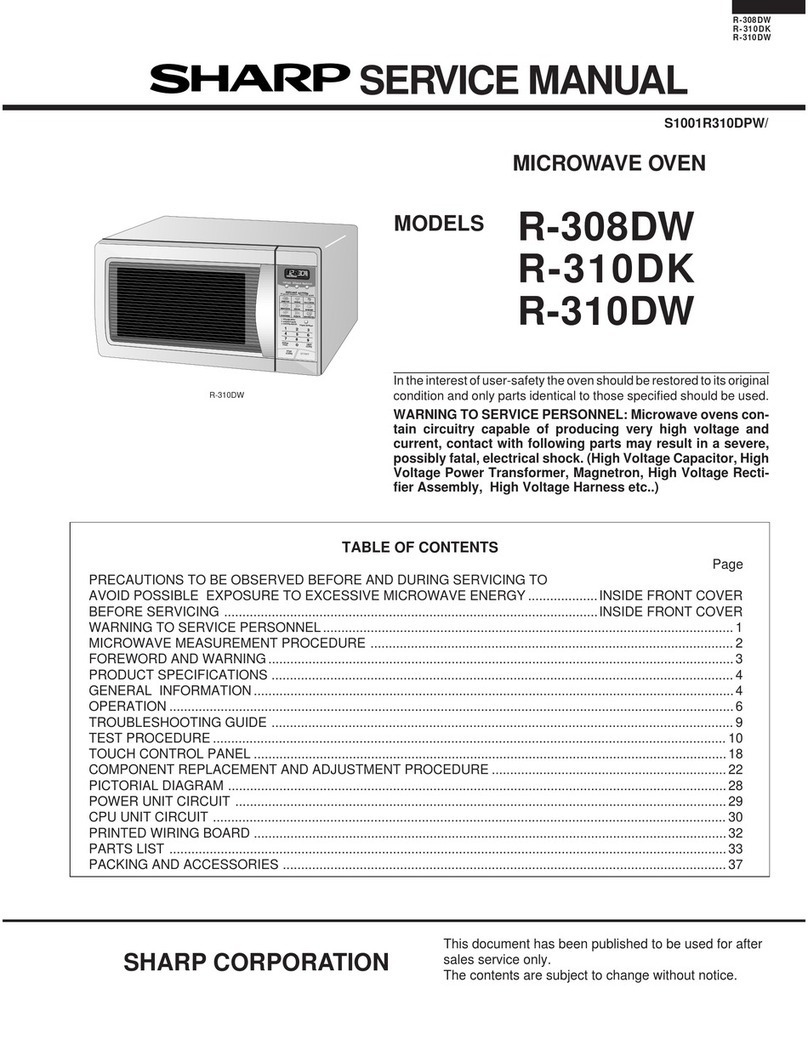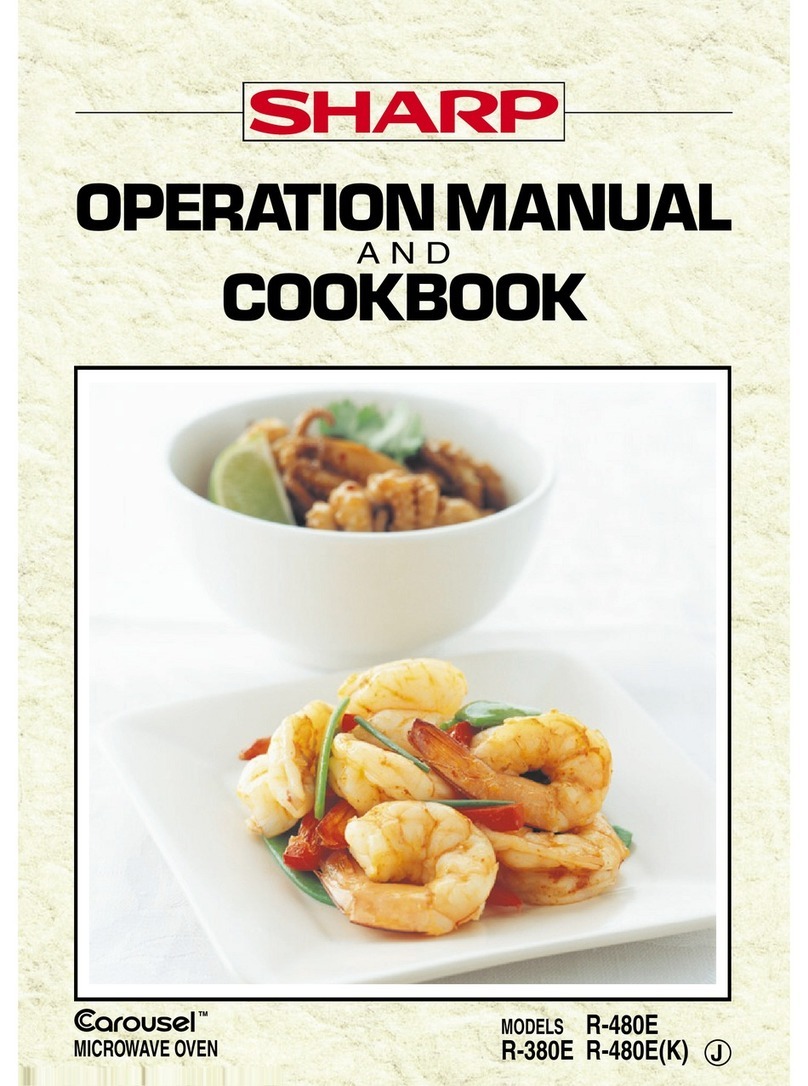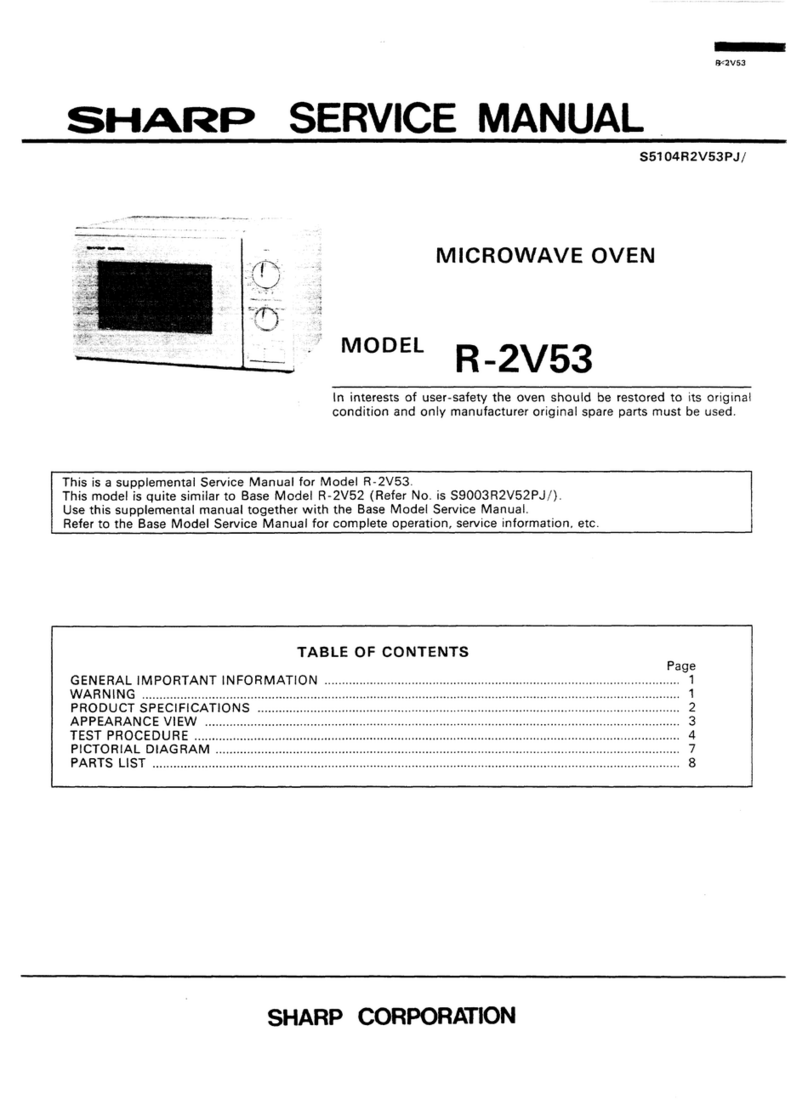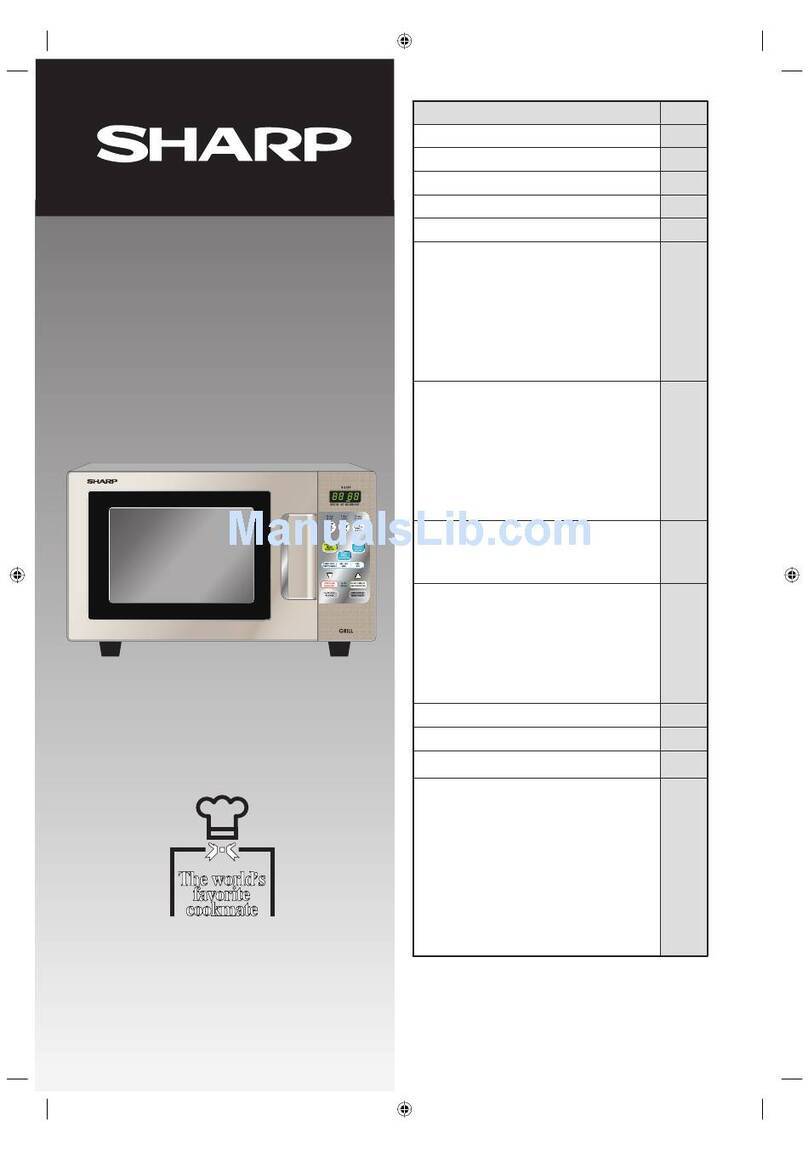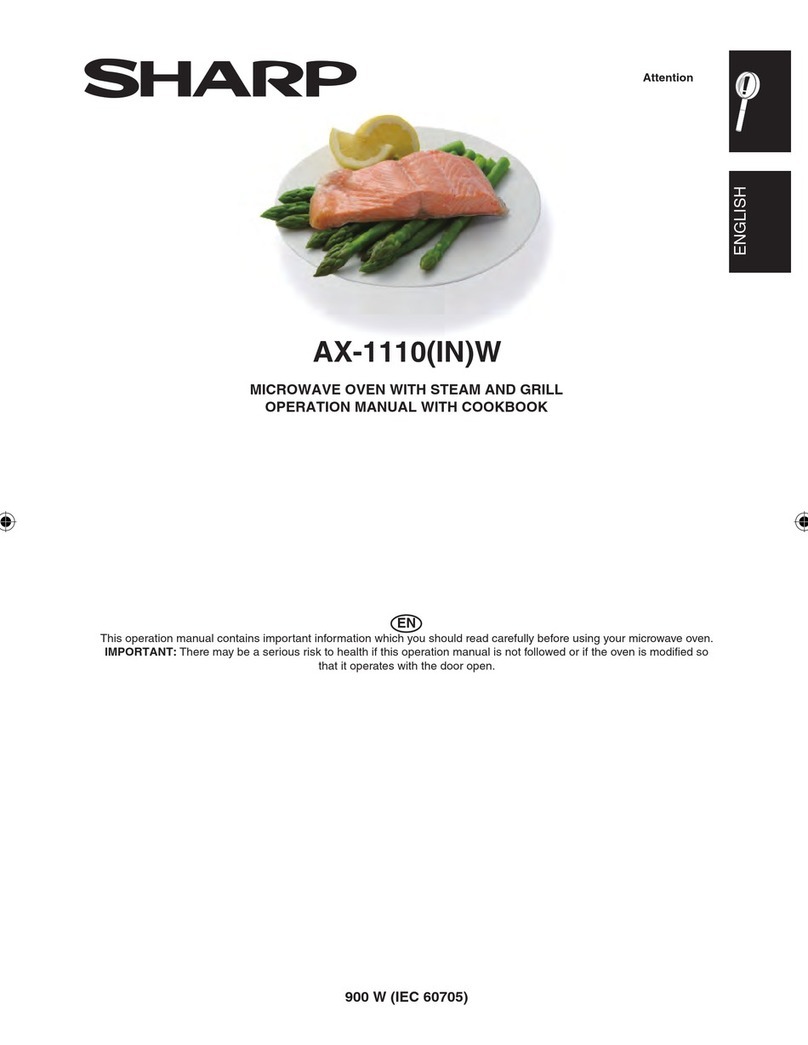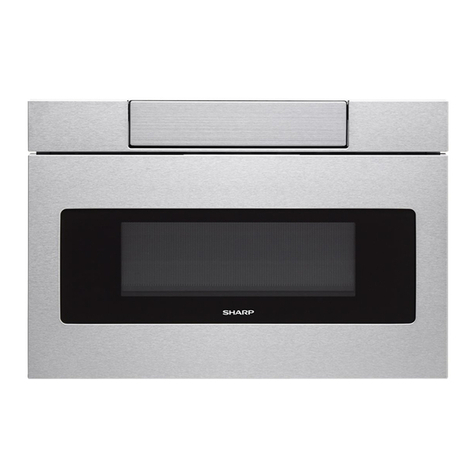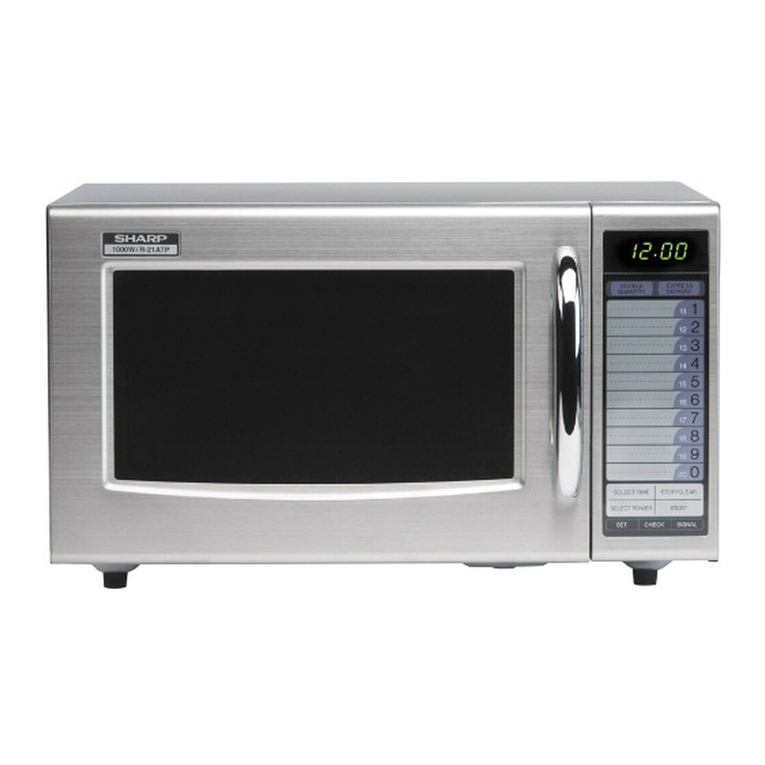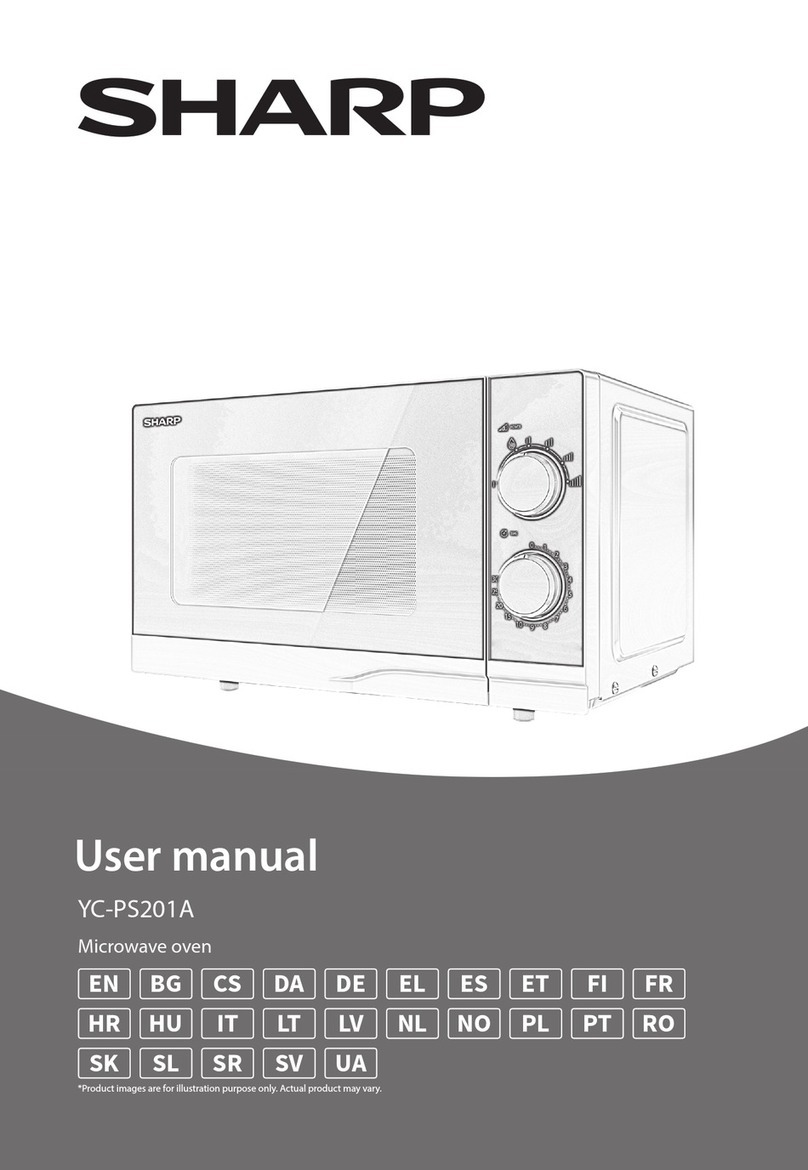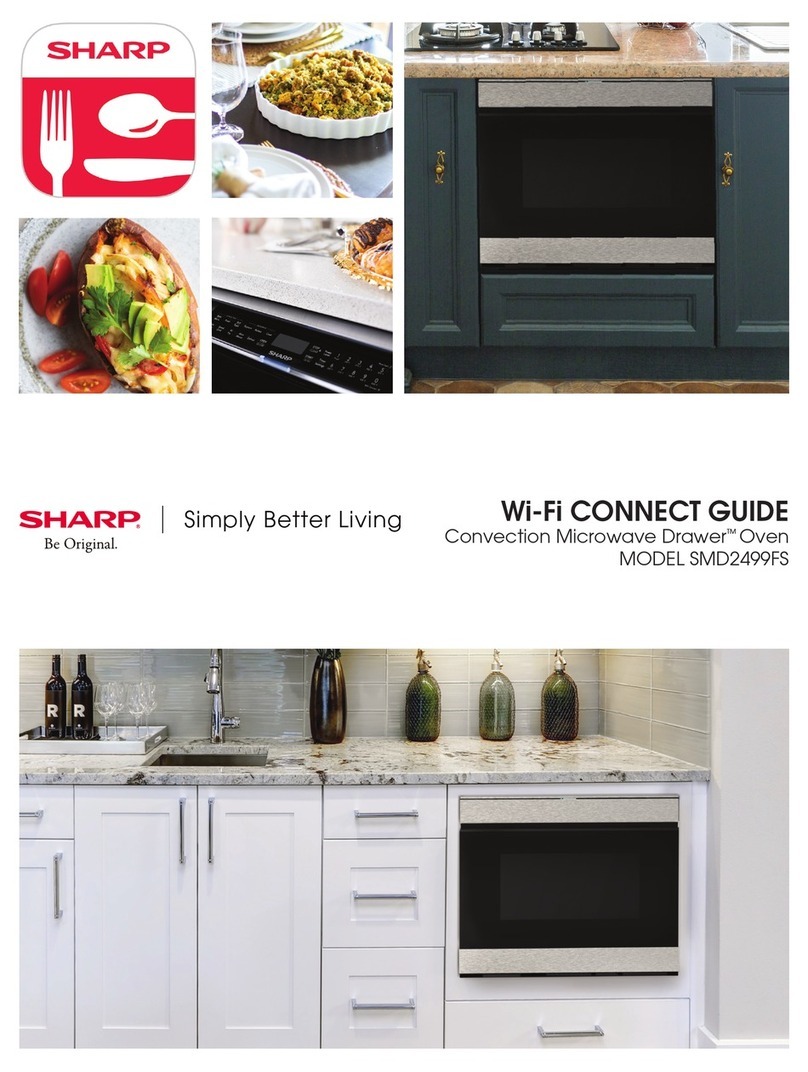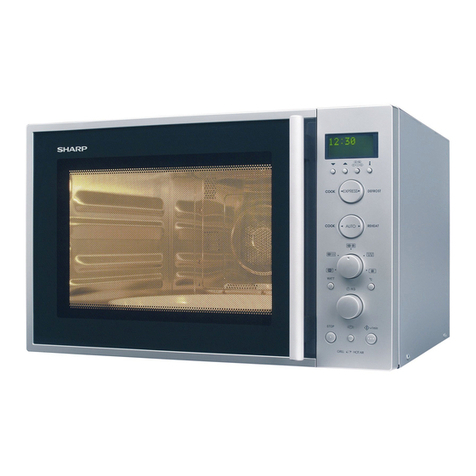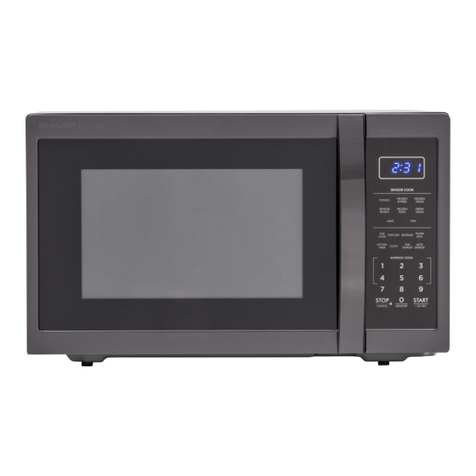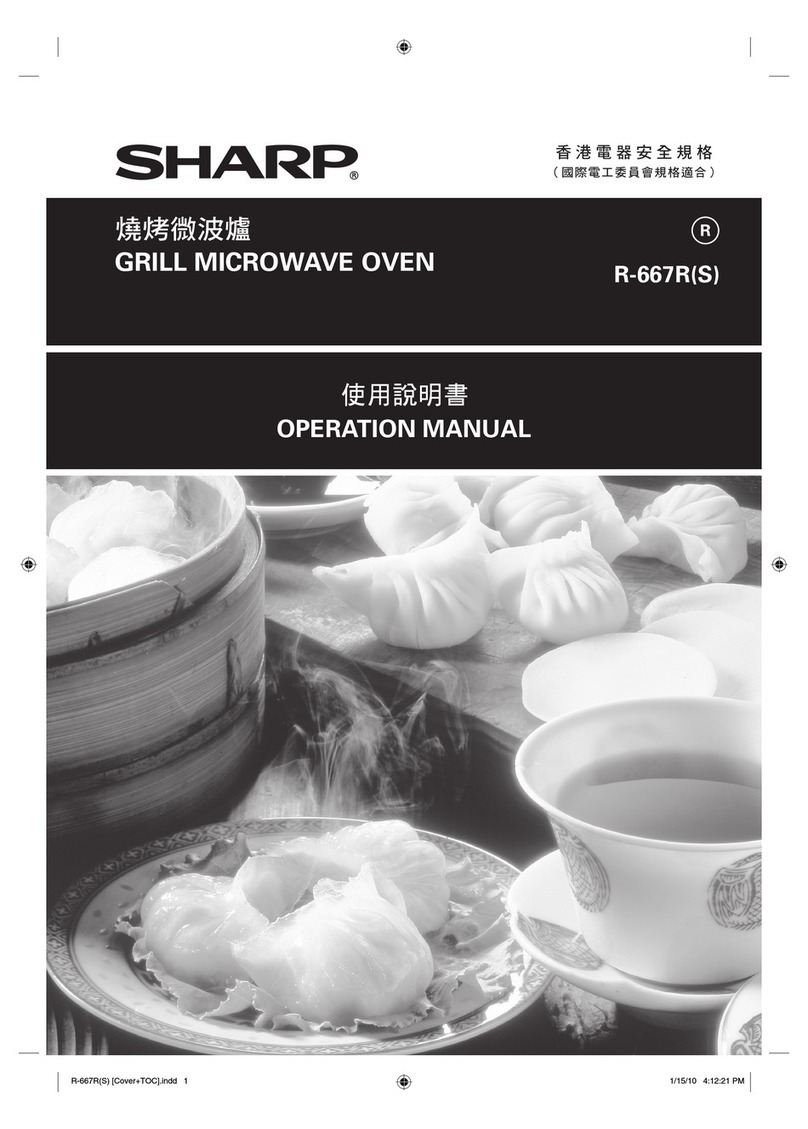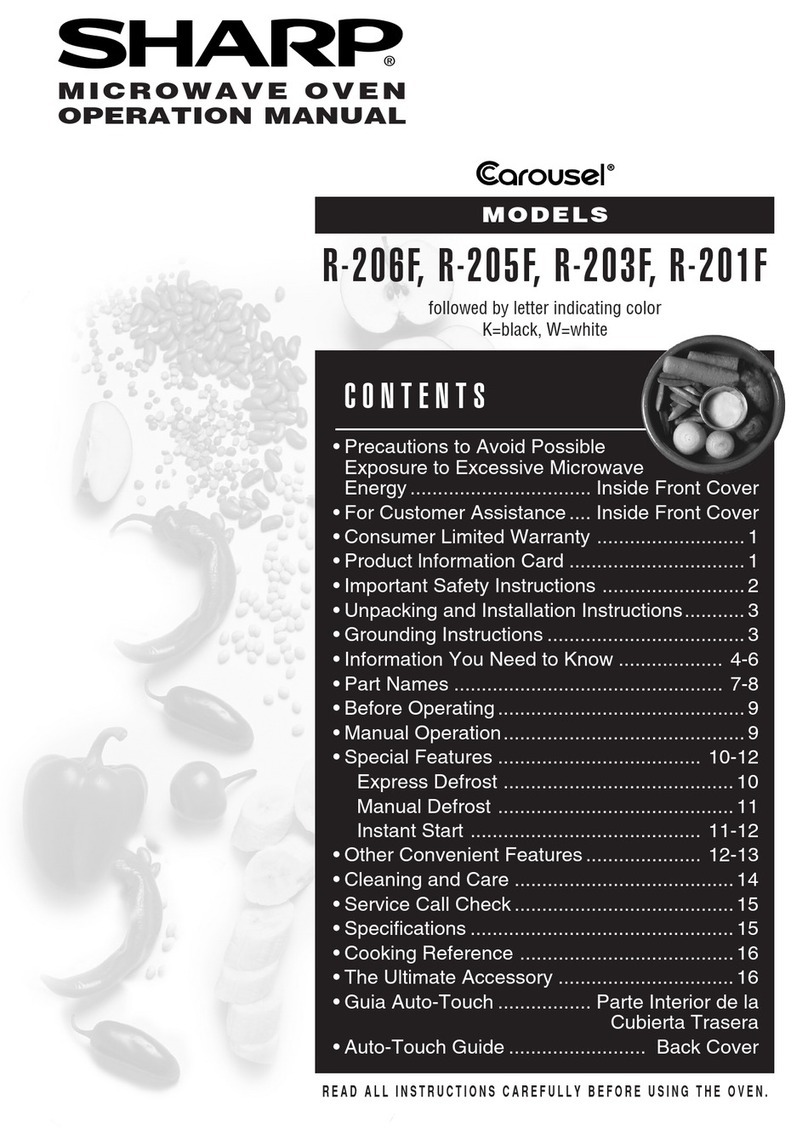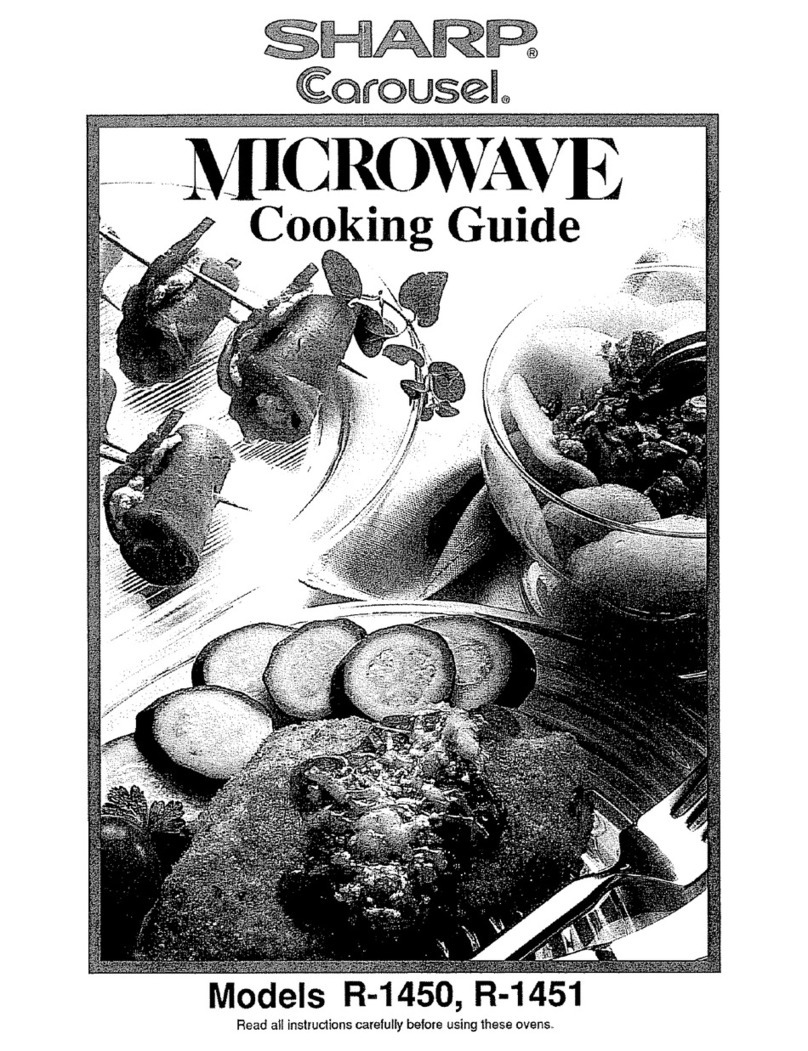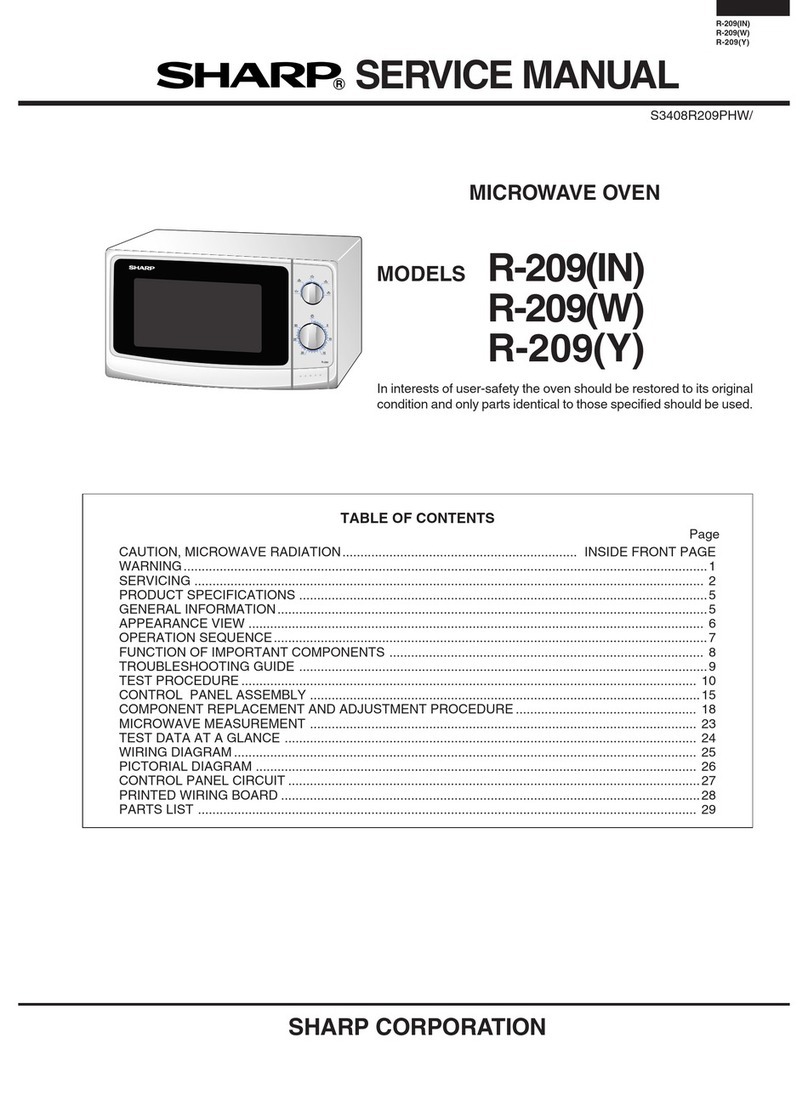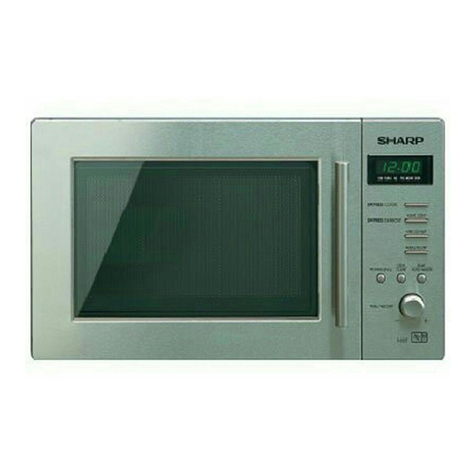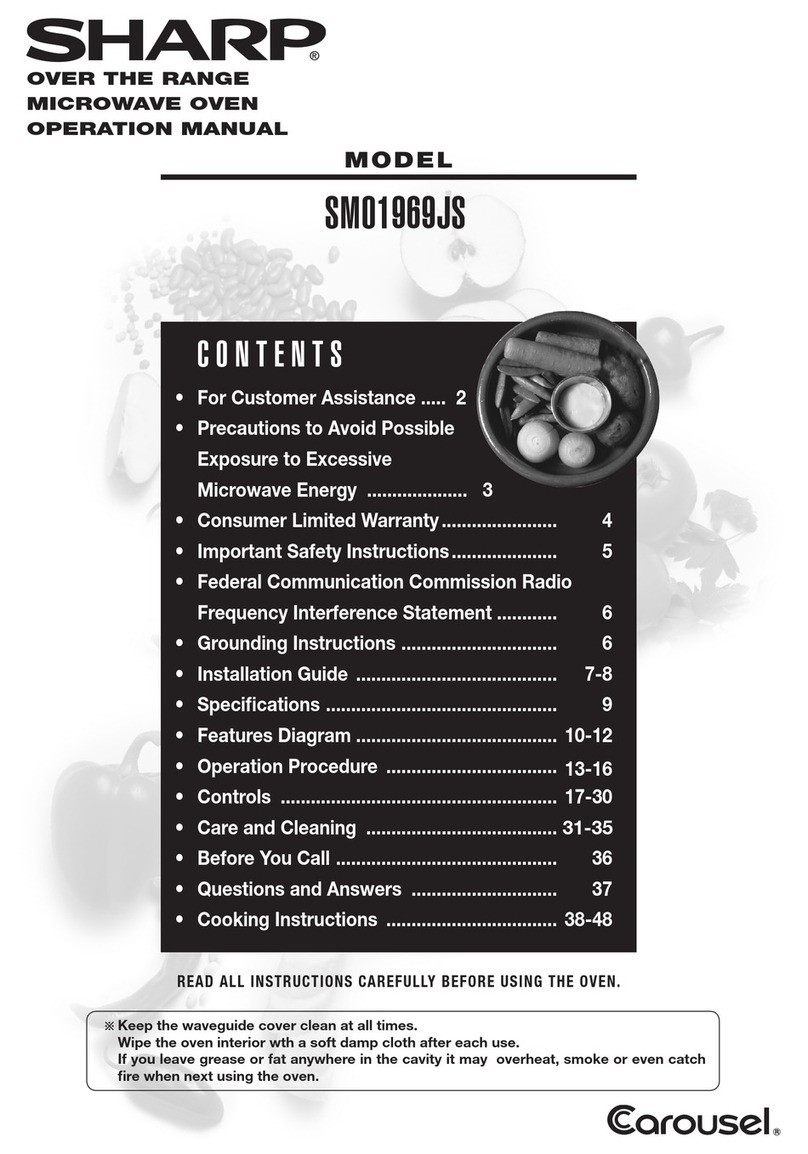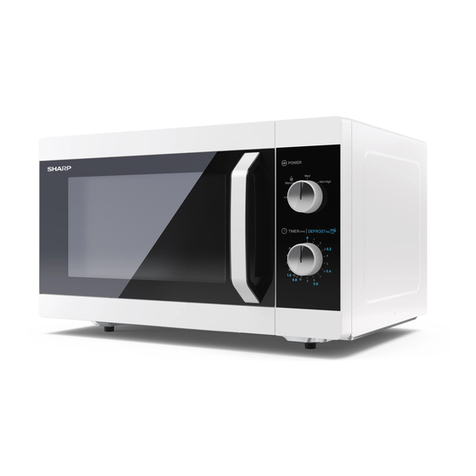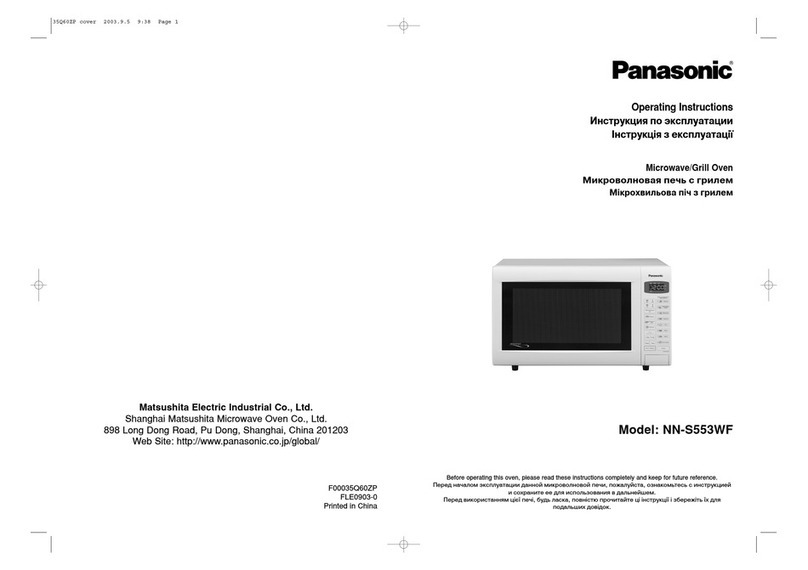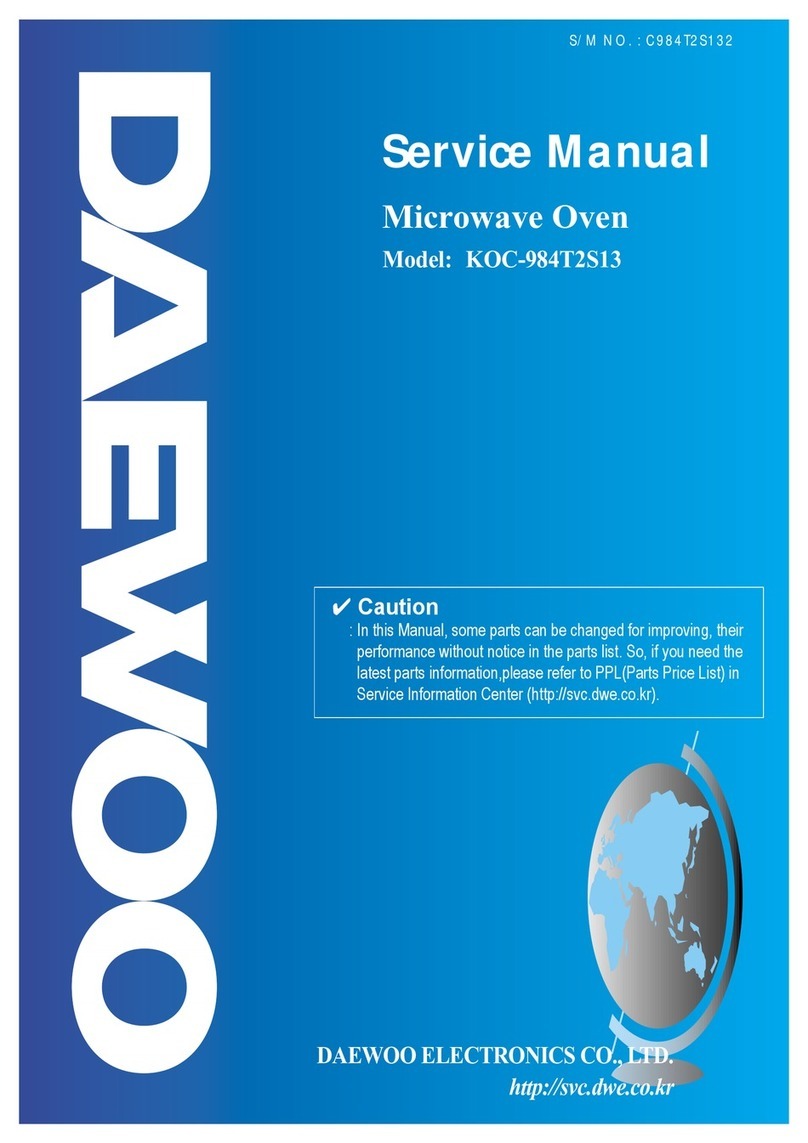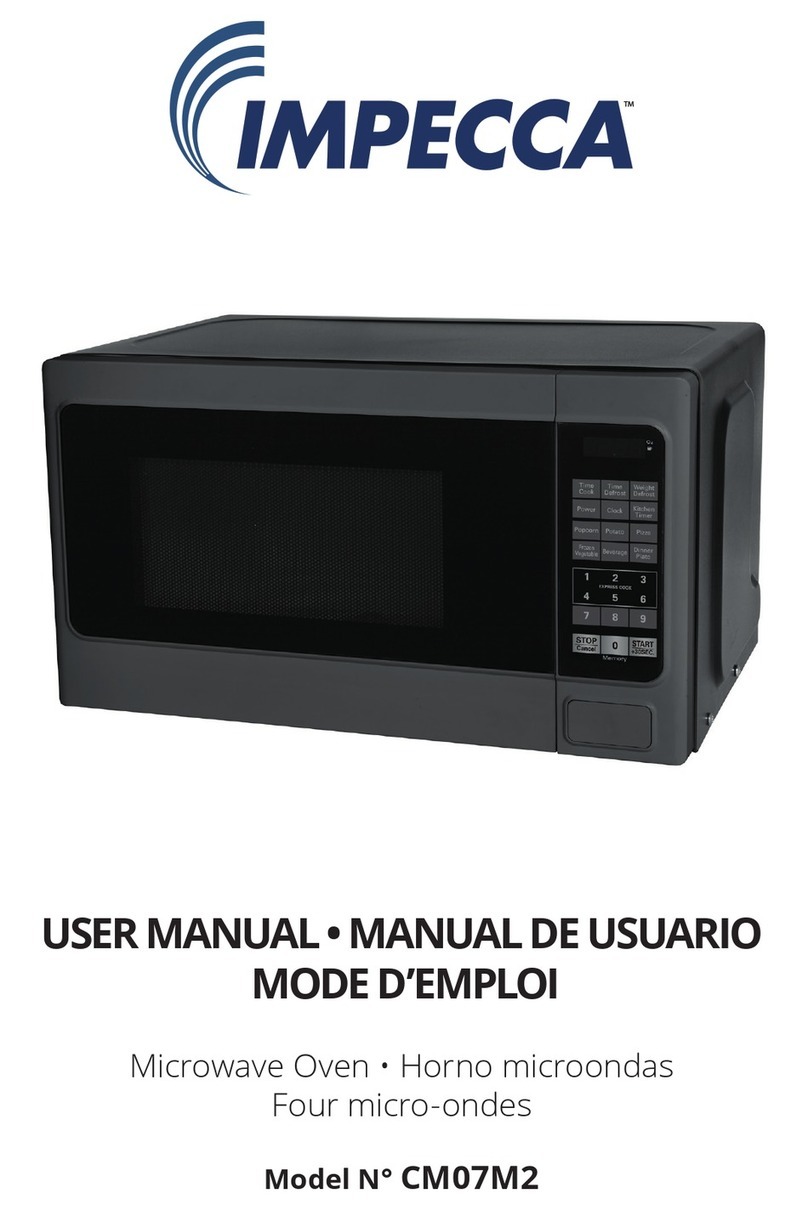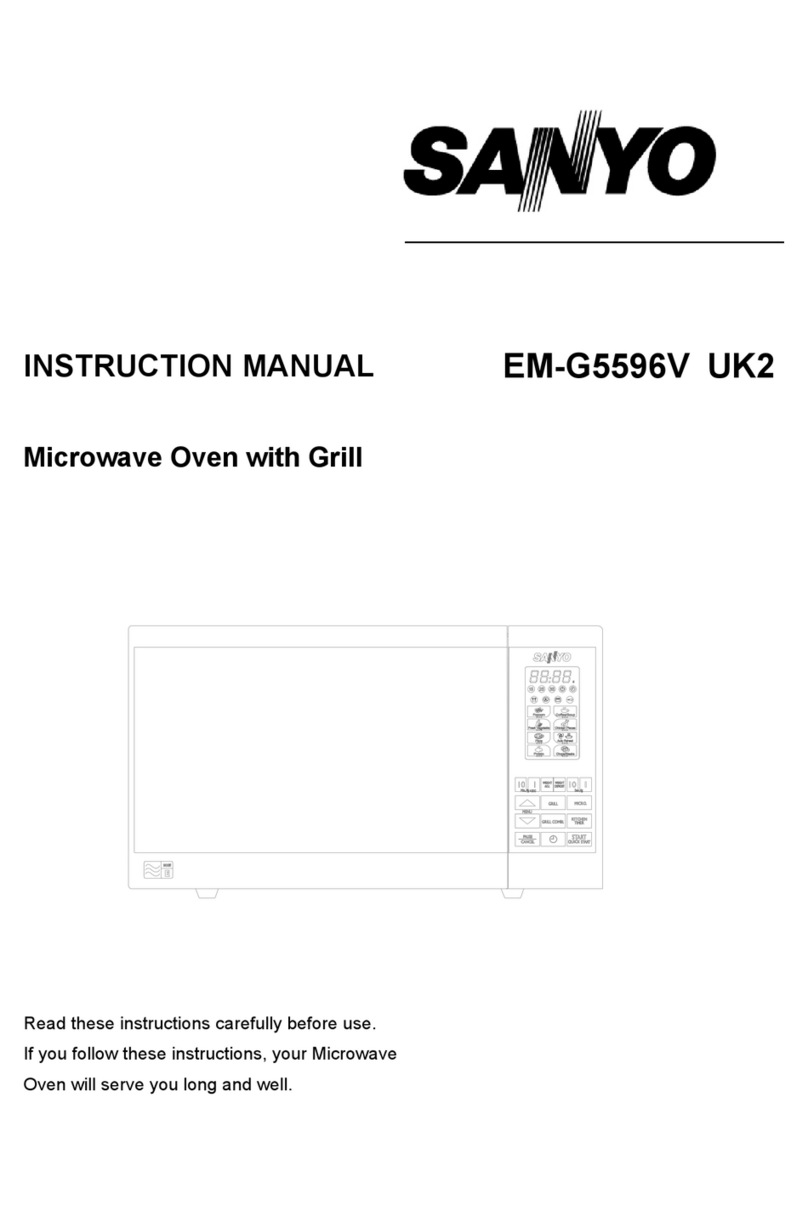
R-7H55
5
2. Thecoilofrelay(RY6)isenergizedbytheCPUunit.The
damper is moved to the closed position, opening the
damper switch contacts. The opening of the damper
switchcontactssendsasignaltotheLSIontheCPUunit
de-energizing the relay (RY6) and opening the circuit to
the damper motor.
3. The coil of heater relay (RY3) is energized by the CPU
unitandthe main supplyvoltageisaddedtotheconvec-
tion heater.
4. Whentheoventemperaturereachestheselectedpreheat
temperature, the following operations occur:
4-1. Theheaterrelay(RY3)isde-energizedbytheCPUunit
temperature circuit and thermistor, opening the circuit
to the convection heater.
4-2. The oven will continue to function for 30 minutes,
turning the convection heater on and off, as needed to
maintain the selected preheat temperature. The oven
will shut-down completely after 30 minutes.
CONVECTION COOKING CONDITION
Whenthepreheattemperatureisreached,abeepsignalwill
sound indicating that the holding temperature has been
reached in the oven cavity. Open the door and place the
food to be cooked in the oven. Program desired cooking
time and convection temperature by touching the number
pad, CONVECTION pad and Temperature pad. When the
START pad is touched, the following operations occur:
1. The numbers of the digital readout start the count down
to zero.
2. The oven lamp, turntable motor, cooling fan motor and
convection motor are energized.
3. Heater relay (RY3) is energized (if the cavity tempera-
tureislowerthantheselectedtemperature)andthemain
supply voltage is applied to the convection heater to
return to the selected cooking temperature.
4. Upon completion of the cooking time, the audible signal
will sound, and oven lamp, turntable motor, cooling fan
motor and convection motor are de-energized. At the
end of the convection cycle, if the cavity air temperature
isabove118˚C,thecircuitto(RY4)willbemaintained(by
thethermistorcircuit)tocontinueoperationofthecooling
fan motor until the temperature drops below 118˚C, at
which time the relay will be de-energized, turning off the
fan motor. Relay (RY5) will however, open as soon as
the convection cycle has ended, turning off the convec-
tion fan motor. This will now cool and allow the damper
door to open.
5. At the end of the convection cook cycle, shut-off relay
(RY6) is energized turning on the damper motor. The
damper is returned to the open position, closing the
damper switch contacts which send a signal to the
control unit, de-energizing shut-off relay (RY6).
MIX COOKING CONDITION
Program desired cooking time and the LOW MIX or HIGH
MIXandtemperature.WhentheSTARTpadistouched,the
following operations occur:
1. The numbers of the digital readout start the count down
to zero.
2. The shut-off relay (RY1+RY5+RY4) energized, turning
ontheovenlamp,turntablemotor,coolingfanmotorand
convection motor.
3. The shut-off relay (RY6) is energized.
The damper door is closed from the open position.
4. The heater relay (RY3) is energized, adding the mains
supply voltage to the convection heater.
5. Now, the oven is in the convection cooking condition.
6. When the oven temperature reaches the selected tem-
perature, the following operations occur:
6-1. The power supply voltage is added to the convection
heater and power transformer alternately.
6-2. The convection heater operates through the heater
relay (RY3) contacts and the power transformer oper-
ates through the cook relay (RY2) contacts.
6-3. These are operated by the CPU unit to supply alter-
nately within a 32 second time base, convection heat
and microwave energy.
The relationship between the convection and micro-
wave power operations are as follows.
Note: The ON and OFF time ratio does not correspond
with the percentage of microwave power, because
approx. 2 seconds are needed for heating of the
magnetron filament.
EASY DEFROST COOKING
TheEASYDEFROSTkeyisaspecialfunctionkeytodefrost
meats and poultry faster and better. EASY DEFROST
automatically defrosts roast beef, etc.. When the EASY
DEFROST is selected and the food weight is entered by
using the number pads, the oven will cook according to the
special cooking sequence.
AUTO COOK CONDITION
AUTOCOOKwillautomaticallycomputetheoventempera-
ture, microwave power and cooking time for baking, roast-
ingandbroiling.Itisbasedonspecificfoodsandthequantity
or weight of the food. Program the AUTO COOK mode by
touchingtheAUTOCOOKpadandNumberpads,enterthe
weight of the food by touching the Number pads. When the
START pad is touched, the oven will generate the micro-
waveenergy and/or convection heater energy according to
the programmed special cooking sequence.
12 SEC. 20 SEC.
32 SEC.
LOW MIX
HIGH MIX
MICROWAVE POWER
= APPROX. 30%
CONVECTION
TEMPERATURE
= 200˚C
MICROWAVE POWER
= APPROX. 10%
CONVECTION
TEMPERATURE
= 180˚C
26 SEC.6 SEC.
ON
ON
OFF
OFF
OFF
ON
(MICRO.)
(CONVEC.)
(MICRO.)
(CONVEC.)
Note: During alternate Microwave/Convection operation,
the convection heater is energized only if the cavity
temperature drops below the set temperature.
